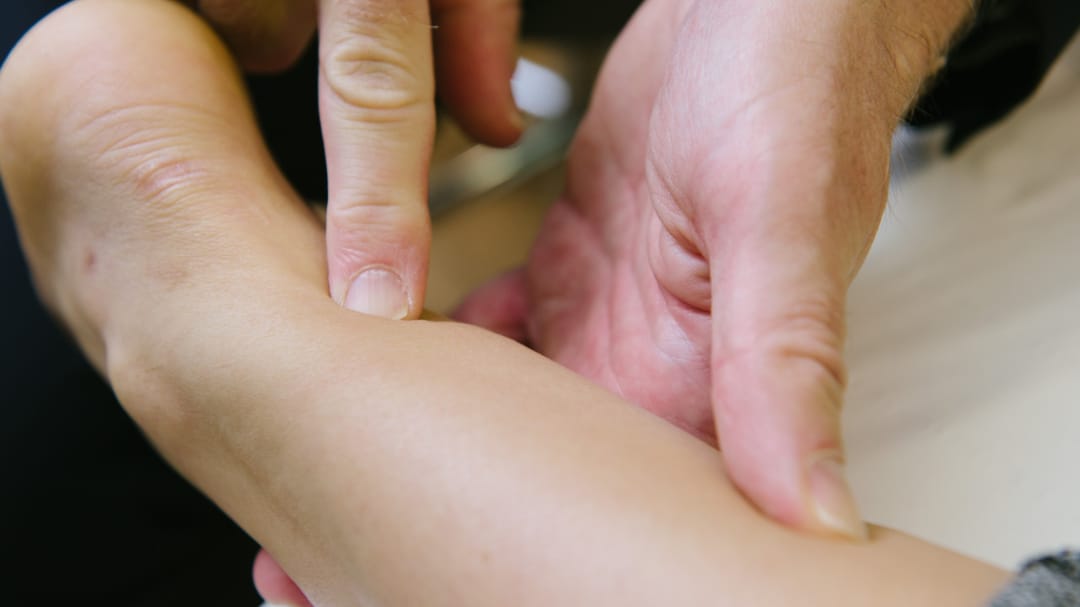Unlock Peak Performance: Soft Tissue Therapy for Tennis Players

Craig Turner
Soft Tissue Therapist
- 1 July, 2024
- Soft Tissue Therapy
- Tennis
- 4 min read
Unlock Peak Performance: Soft Tissue Therapy for Tennis Players
Tennis—a sport of precision, agility, and relentless movement—places immense demands on the body.
Whether you’re a seasoned pro or a weekend warrior, your muscles, tendons, and joints work tirelessly to execute those powerful serves, lightning-fast volleys, and graceful backhands.
But what if I told you there’s a secret weapon that can enhance your performance, accelerate recovery, and keep you in the game? Enter soft tissue therapy; a game-changer for tennis players of all levels.
1. Improved Flexibility and Range of Motion
Flexibility is crucial for tennis players, allowing for full, fluid movements and reducing the risk of injury. Soft tissue therapy helps in stretching and lengthening muscles and connective tissues, enhancing flexibility and range of motion. This means you can reach those wide shots with ease and perform powerful serves without straining.
Muscle Energy Techniques (MET) involves active stretching where the player contracts the target muscle against resistance, followed by relaxation and further stretching. This technique helps lengthen muscles and increase joint flexibility, enhancing a player’s range of motion.
2. Injury Prevention
Tennis is notorious for repetitive stress injuries like tennis elbow, as well as acute strains and sprains. Soft tissue therapy addresses muscle imbalances, tightness, and adhesions, which are often the culprits behind these injuries. By maintaining healthy, pliable muscles, you can significantly reduce your risk of injury.
3. Enhanced Muscle Performance
Muscle tension and tightness can hamper performance. Soft tissue therapy reduces muscle tension, optimises muscle function, and ensures your muscles are working efficiently. This leads to more powerful and precise movements, helping you deliver your best game on the court.
4. Faster Recovery
After an intense match or training session, your muscles need to recover. Soft tissue therapy promotes blood circulation, aiding in the removal of metabolic waste and delivering essential nutrients to muscles. This accelerates the healing process, reduces soreness, and gets you back on the court faster.
This is done is by enhancing blood flow to the muscles and tissues, which is another significant benefit of soft tissue therapy. Improved circulation ensures that oxygen and essential nutrients are delivered to your muscles, which is vital for repair and performance.
5. Enhanced Recovery from Injuries
For players recovering from injuries, soft tissue therapy is an integral part of rehabilitation. It helps reduce scar tissue formation, improve tissue elasticity, and restore normal function to affected areas. This means a quicker and more effective recovery, getting you back to your peak performance levels.
6. Pain Relief
Muscle knots, tension, and inflammation can cause significant discomfort. Techniques such as myofascial release and trigger point therapy used in soft tissue therapy can alleviate pain and discomfort, allowing you to play pain-free and focus on your game.
7. Improved Muscle Balance and Coordination
Imbalances in muscle strength and function can lead to poor performance and increased injury risk. Soft tissue therapy helps identify and correct these imbalances, leading to better coordination and more balanced muscle function. This is crucial for executing those precise shots and swift movements.
8. Better Movement Patterns
Restrictions in fascia and muscle tissues can impede your movement patterns and biomechanics. Soft tissue therapy addresses these restrictions, leading to more efficient and effective movements on the court. This not only boosts your performance but also helps in preventing compensatory injuries.
9. Stress Reduction
The mental demands of tennis are as significant as the physical ones. The therapeutic touch and techniques used in soft tissue therapy have a relaxing effect on the nervous system, reducing stress and anxiety. This mental relaxation translates to better focus and concentration during matches.
10. Mental Clarity and Focus
Finally, the relaxation and relief provided by soft tissue therapy can contribute to better mental clarity and focus. This mental edge is crucial for strategic planning and execution during a tennis match, giving you a competitive advantage.
Incorporating regular soft tissue therapy into your training regimen can provide numerous benefits, from enhancing performance and reducing injury risk to improving overall well-being.
Whether you’re a pro or playing for fun at your local club, soft tissue therapy can help you stay at the top of your game and enjoy tennis to the fullest. So next time you hit the court, remember that taking care of your body off the court is just as important. Your muscles will thank you!
References
- Weerapong, P., Hume, P. A., & Kolt, G. S. (2005). The Mechanisms of Massage and Effects on Performance, Muscle Recovery and Injury Prevention. Sports Medicine, 35(3), 235-256.
- Best, T. M. (2014). The Role of Massage in Sports Performance and Rehabilitation: Current Evidence and Future Direction. British Journal of Sports Medicine, 48(12), 952-956.
- Smith, L. L. (1994). Acute inflammation: The underlying mechanism in delayed onset muscle soreness? Medicine & Science in Sports & Exercise, 26(2), 156-158.
- Zainuddin, Z., Newton, M., Sacco, P., & Nosaka, K. (2005). Effects of massage on delayed-onset muscle soreness, swelling, and recovery of muscle function. Journal of Athletic Training, 40(3), 174-180.
- Schleip, R., Müller, D. G., Klingler, W., & Lehmann-Horn, F. (2012). Fascia: The Tensional Network of the Human Body. Journal of Bodywork and Movement Therapies, 16(4), 480-491.
- Halpern, M. T., Khan, Z. M., & Rentz, A. M. (2012). Impact of Myofascial Release Therapy on Quality of Life in Patients with Chronic Musculoskeletal Pain. Sports Medicine, 42(1), 59-70.
- Field, T. (1998). Massage therapy effects. American Psychologist, 53(12), 1270-1281.
- Hemmings, B., Smith, M., & Graydon, J. (2000). Effects of massage on physiological restoration, perceived recovery, and repeated sports performance. Journal of Sports Sciences, 18(5), 845-852.
- Crane, J. D., Ogborn, D. I., Cupido, C., Melov, S., Hubbard, A., Bourgeois, J. M., & Tarnopolsky, M. A. (2012). Massage therapy attenuates inflammatory signaling after exercise-induced muscle damage. Science Translational Medicine, 4(119), 119ra13-119ra13.

Advice
Over the last 20+ years our experts have helped more than 100,000 patients, but we don’t stop there. We also like to share our knowledge and insight to help people lead healthier lives, and here you will find our extensive library of advice on a variety of topics to help you do the same.
OUR ADVICE HUBS See all Advice Hubs

